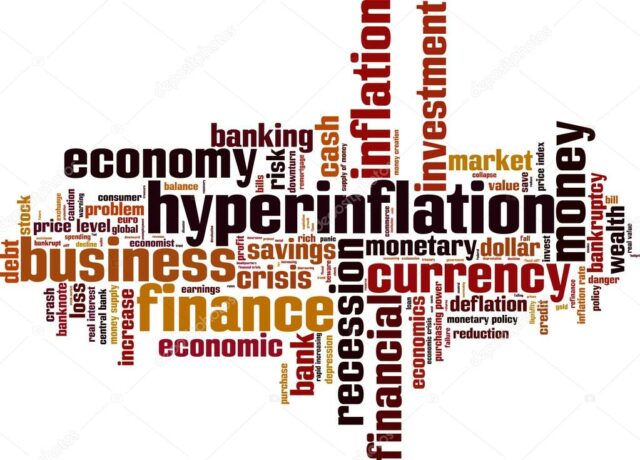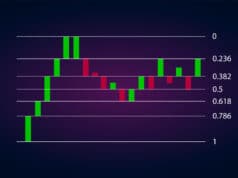Hyperinflation is a situation in an economy where the purchasing power of a currency decreases at an uncontrollably rapid rate. The cause of this phenomenon is an economy that is growing at an unsustainably fast rate, or more often than not, the printing of money. Typically, inflation rates at over 50% in a period of a month are considered hyperinflation.
Key cases of hyperinflation
Venezuela
Problems with the Venezuelan economy are currently the most prominent example of hyperinflation. The country is in political and social turmoil. The inflation rate in 2020 was more than 2000%, and many people are looking to emigrate. Now, $1 buys you more than 400 million Venezuelan Bolivar.
Zimbabwe
In the early 2000s, Zimbabwe suffered one of the most severe cases of hyperinflation we have witnessed. Until today, the country is still suffering from the consequences of this. Zimbabwe’s problem was a fundamentally weak economy. This is not helped by the fact that they are managed by a corrupt group of leaders and are often plagued with warfare.
The result of this is inefficient policies in response to insufficient output. To combat this, the Zimbabwean central bank and government decided to print more money. The outcome was inevitable: inflation, very bad inflation.
Zimbabwe was the victim of the second-highest inflation rate of all time. At the peak of their inflation in 2008, they had an annual rate of 9 * 10^22%. Although this figure has decreased, in 2020, they still have a brutal 500% of inflation.
Germany after WW1
Germany, then the Weimar Republic, was deemed guilty for the war as the aftermath of the Treaty of Versailles. They had to pay for all the damage caused during the war.
Their solution? – Printing money.
The value of the marks consequently skyrockets from 1 gold mark being worth ten paper marks to 1,000,000,000,000 in a span of 4 years.
They were also in a predicament: to stop the inflation, the citizens would be unemployed and poor, but not taking action would lead to hyperinflation.
The two solutions that most governments choose to solve this problem are either changing to a new currency or using an intermediate currency, which at the moment is likely the USD.
The effects of hyperinflation on the money market
When a country faces hyperinflation, the following will happen to the demand and supply of their currency.
- Low demand
- High supply
The former is caused by people buying foreign currency as they lose trust in the hyper-inflated currency. Hyperinflation is a self-perpetuating cycle; therefore, speculation is that it will continue at an even faster rate. Hence, most people will attempt to buy foreign currency to protect the purchasing power of their assets.
Not only are citizens buying foreign currencies, but many also emigrate. Generally, hyperinflation goes hand-in-hand with civil and political unrest. This makes a living in the country less desirable, and more people would be leaving than there are coming into the country.
The low demand for a currency is caused by three reasons – all involving foreign citizens. Firstly, foreign investors do not trust the currency and the country to invest in their projects. The lack of trust is a sentiment shared by foreign consumers.
The quality of goods and services produced by a country experiencing instability will likely plummet. This also includes a decrease in the tourism sector. Less exported goods lead to lower demand for the currency.
Results of hyperinflation on exchange rates
Both the effects mentioned above on the money market are the same: a lower relative exchange rate. However, unlike the floating exchange rate theory, hyperinflation likely leads to a perpetual decrease in relative exchange rates.
How to best trade a hyper-inflated currency
When the inflation rate of a country spirals out of control, there are two possible scenarios. First, the country will keep using the old currency and have a contractionary policy to try and deflate it. However, as this phenomenon is usually irreversible, the country might change completely into a new currency. The resulting actions are binary opposites of each other.
If a country continues to use the old currency, counterintuitively, things will only worsen, and most often than not, the currency will continue to depreciate. Therefore, it could be a good strategy for traders to be in a short position. Be ready to take higher risks for higher rewards as hyperinflation is often a self-perpetuating cycle.
The other scenario is a change of currency. This process will take a while, so a country will have an intermediate currency. It is likely to be the USD in today’s economy even though the euro is the more probable option if it’s a European country.
We may observe an influx in demand for the currency, which increases exchange rates. A recommended strategy in this scenario is in a USD long position with another relatively stable currency.
Takeaways
Hyperinflation happens when an economy is growing at an unsustainable rate, usually caused by inefficient economic policies such as printing money. It is detrimental to any economy. However, forex traders can still profit from it by understanding its basics and the trends of previous hyperinflated currencies.
The supply of a currency in the forex market will increase, whereas the demand goes in the opposite direction. This results in lower exchange rates. Thus traders should short the currency in question.
Keep an eye out for the transition period where the government might temporarily use another currency. This will greatly appreciate the currency due to high demand, so traders should be in a long position when it happens.




